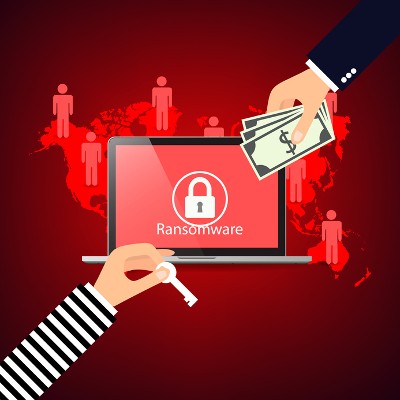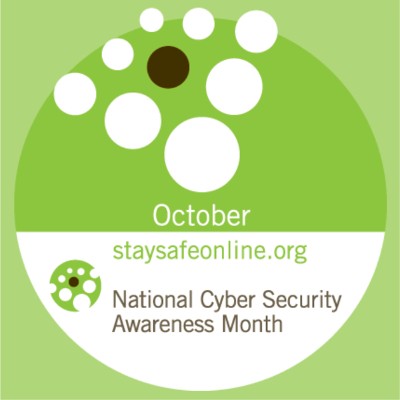Ferrum Technology Services Blog
The Internet is a vast place filled to the brim with threats, especially for businesses that need to preserve the integrity of their infrastructure and keep critical data safe. The Cisco 2017 Annual Cybersecurity Report states that ransomware is growing at a yearly rate of 350%, which is a considerable number to say the least. Here are five tips that can help you keep your business safe from ransomware infections.
Every October, the Department of Homeland Security (DHS), United States Computer Emergency Readiness Team (CERT), and the Federal Bureau of Investigation (FBI) join forces to drive cyber security awareness. Cybercrime is a constant threat to individuals and businesses, alike. In fact, the risk is so significant that the US government decided to step up and offer information and resources stressing the importance of cyber security and raise awareness on the best practices to utilize when protect your nonpublic information.
Microsoft’s monthly Patch Tuesday issued resolutions to 48 vulnerabilities in August, including 15 that affected Windows, 25 critical flaws, 21 important flaws, and 27 that allowed for remote execution. This is a lot to consider, but the main jist of this is that lots of threats were fixed, and that your organization shouldn’t risk not implementing them as soon as possible.
While not always the case, hackers will generally act with a purpose. They might be looking to snatch some personally identifiable information from a database, or account credentials form unwary users. Regardless, hackers will go to any length to collect this information from unsuspecting users, and you need to do what you can to protect it.
With technology being so important for modern business, these organizations have to be cognizant of industry and technology trends that could be used to improve their company’s productivity. How do the newest business technology trends affect your organization's ability to sustain or build revenue streams?
You’ve been told that it’s a best practice to ensure that you never leave your workstation without locking it first. Yet, if you’re only stepping away for a few minutes, it might be tempting to just allow it to remain unlocked. But what happens when you step away for longer than expected? You leave your computer exposed to all manners of threats. Thankfully, a new solution allows for a fix with a device that most are never without: the smartphone.
With the explosive popularity of social networking, the Internet seems to be a less private place than ever. With both communication and cyber crime rising in commonality, online privacy seems to be turning into a less attainable goal than ever. However, for this week’s tip, we’ll review some of the tools out there that can help you fight for your right to privacy.
Technology has revolutionized business. However, along with all the advantages and benefits technology affords us, it comes with a few risks and vulnerabilities that some businesses are still struggling to come to terms with. For example, storing records electronically makes them easier to organize and locate when they’re needed. It also makes them vulnerable to hacker and cyber-attacks. Still, most SMBs are working toward mitigating risks as opposed to abandoning the use of technology in their business operations - and a current assessment of the situation does show improvement over past years.
Network security is equally important for businesses of all sizes. Ensuring that your infrastructure remains firm is one of the most crucial tasks in managing a business. You don’t have to do it alone, though. There are enterprise-level tools available that can give small businesses the same security standards as larger organizations, and it all starts with a Unified Threat Management (UTM) solution.
Security is an incredibly important part of running any business, but unless you’re a professional IT technician, you may run into a couple of roadblocks while implementing a solution. Chief among these is not knowing exactly what you’re protecting your business from. Keep the following tips in mind to reinforce your security strategy and preserve your business infrastructure’s integrity.
Chances are that you, like most business owners, have assembled your staff very carefully, looking for people who are the best-in-class, willing to work their hardest for the good of the company. However, this staff will be made up of humans, and will therefore make mistakes. As such, you need to make sure that your data is managed in a way that keeps it safe.
Encryption is one of the most effective ways to secure a file, and even the average user can take full advantage of it on their Windows PC. In essence, you can arrange for your files to appear as random numbers, letters, and special characters in the event that an unauthorized user accesses them.You might be surprised to learn that even your Windows PC has encryption options so that you can protect your sensitive information if so desired.
Every user on your network adds an additional level of risk, whether it be risk of user error, making a mistake that causes a data breach, or worse. One would assume that a company’s biggest risk would come from an untrained employee that disregards security policies, but surprisingly, that’s not always the case. Research has shown that a company’s CEO along with the rest of its C-level executives are the greatest security risk.
On May 11, 2017, the WannaCry ransomware spread around the globe like wildfire and disabled computing infrastructures belonging to organizations of all shapes and sizes. As the world watched the news unfold, it seemed as if practically no business was immune to this ultra-powerful ransomware. Yet, many quick-thinking organizations were. All because they had the foresight to follow IT best practices.
One of the best ways to progress in business is by looking at what doesn’t work, and learning from it. Nowhere is this more true than in the realm of cybersecurity. You can find out how best to protect your network by looking at what has happened in the past, as well as what cyber attacks other organizations have suffered from.
Cars aren’t as simple as they used to be, particularly in regard to the technology that’s inside them. Nowadays, you’d be hard-pressed to find a new vehicle that isn’t vulnerable in some way to threats like malware or cyber attacks. The researchers at Kaspersky have proven that many apps that are connected to smart cars aren’t as secure as drivers expect them to be.
Despite cash having been king for centuries, many businesses today have elected to implement cashless payment options as their customers increasingly rely on the mobile payment technologies that their personal devices allow. These businesses are the ones making the smart choice, as there are many factors that encourage the adoption of alternative payment technologies.
When you get an email from a big name brand or a trusted vendor, how often do you question the authenticity of it? Thanks to threats like email spoofing, you can’t afford to be as trusting of others as you might like. When all it takes is clicking the wrong link or opening the wrong attachment to set something terrible in motion, you need to be very cautious.




















